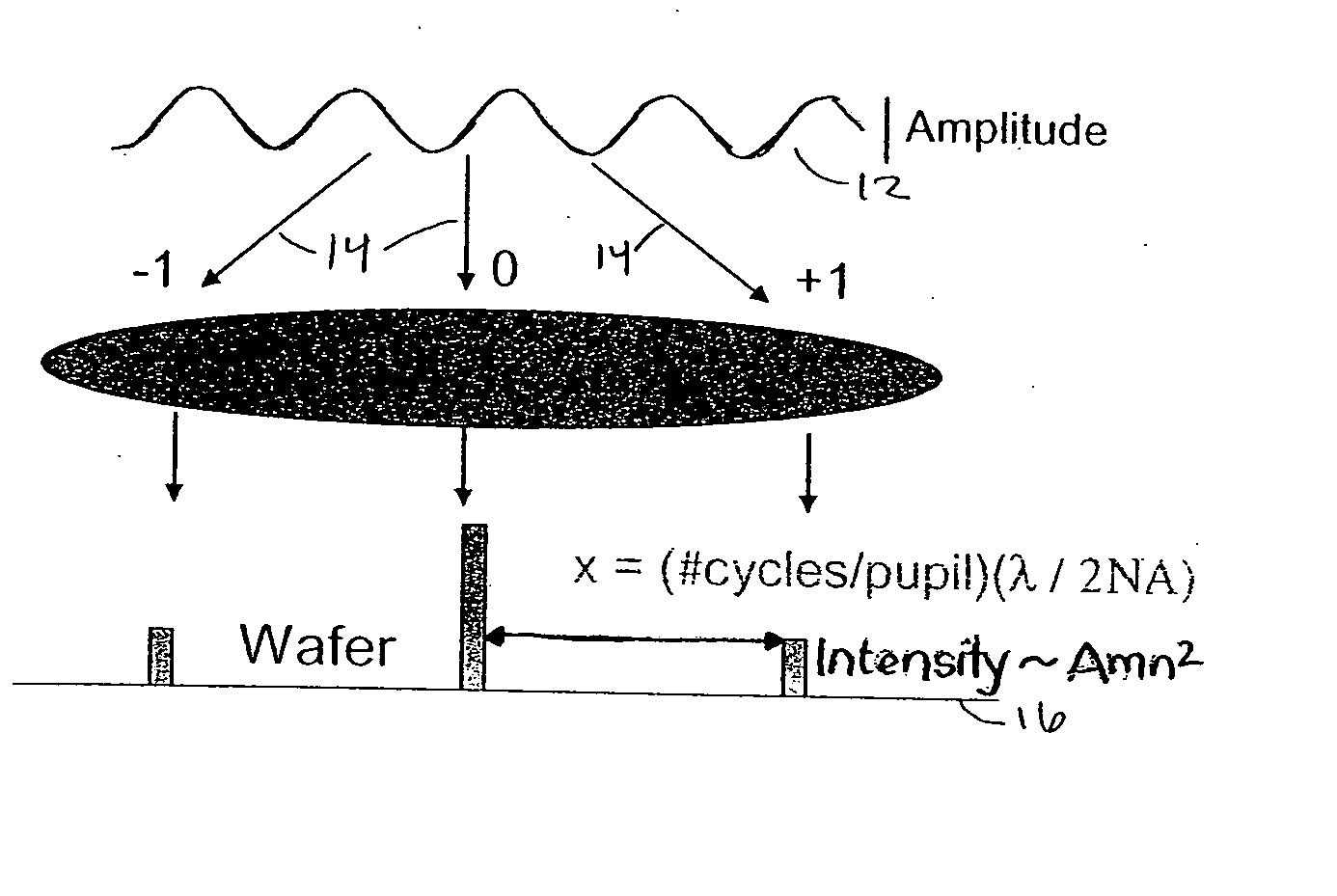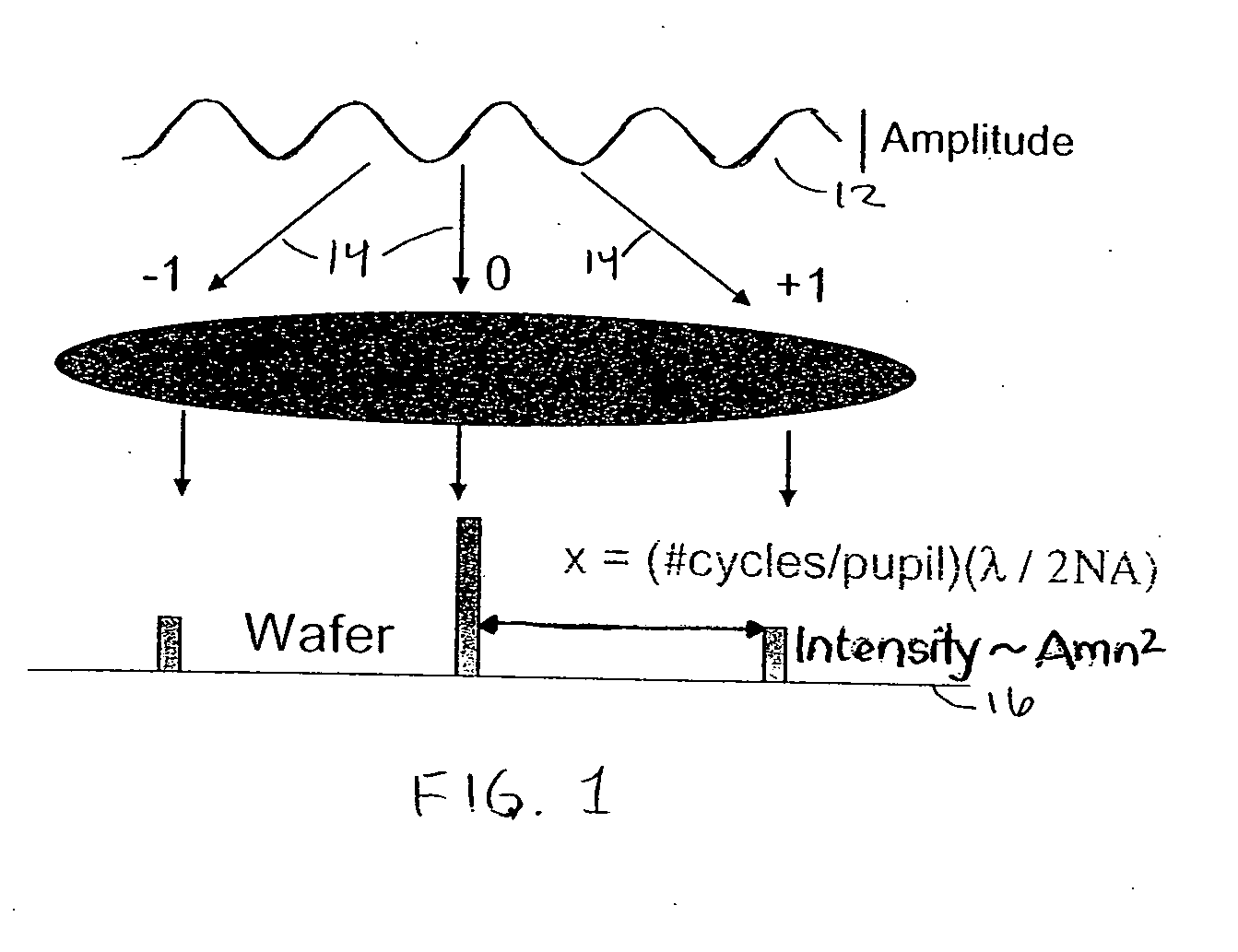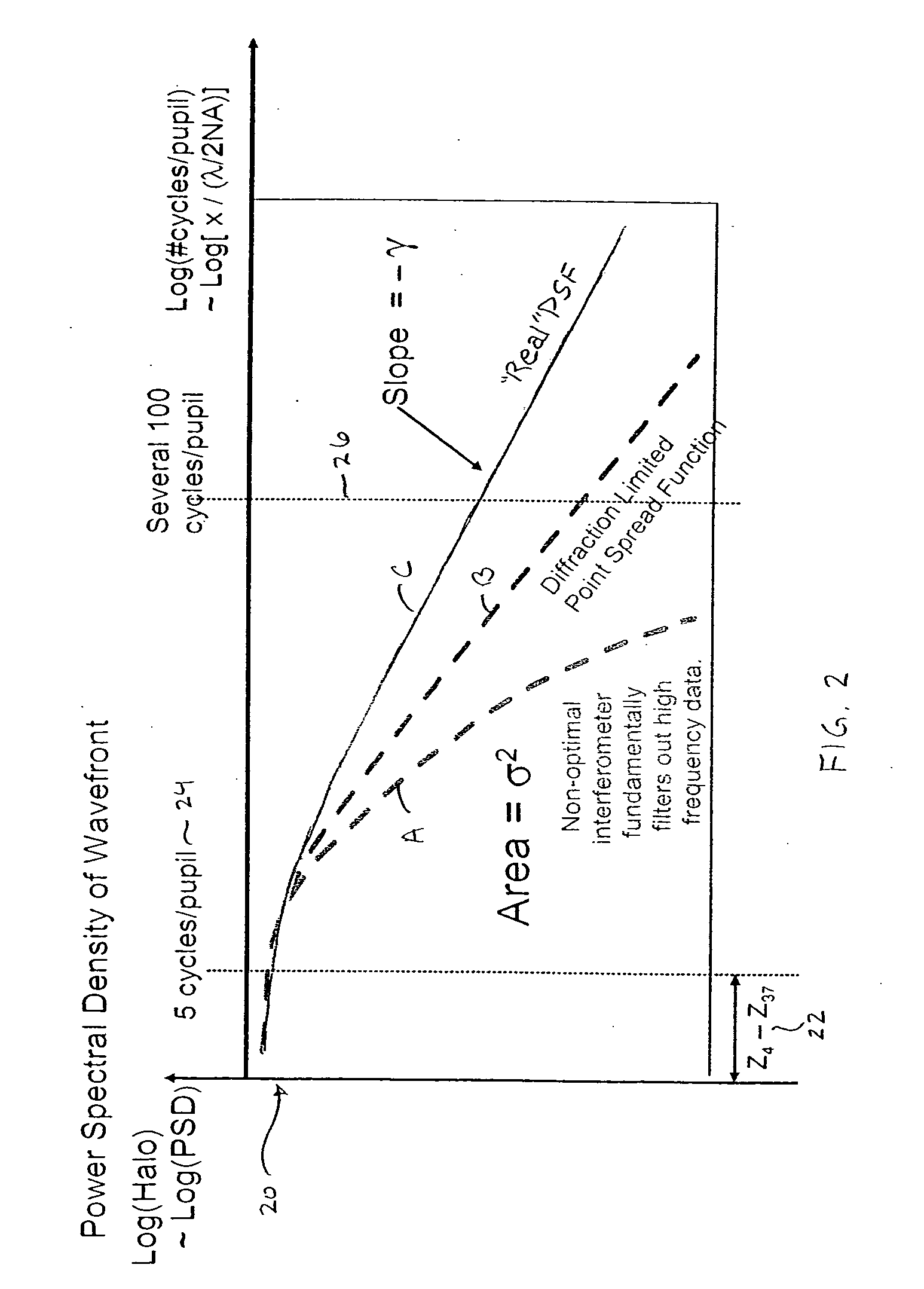Incorporation of a phase map into fast model-based optical proximity correction simulation kernels to account for near and mid-range flare
a phase map and simulation kernel technology, applied in the field of optical microlithography, can solve the problems of low simulation efficiency, hampered data analysis, and low simulation efficiency of simulation kernels, and achieve the effect of fast model-based simulation kernels and simulation kernels
- Summary
- Abstract
- Description
- Claims
- Application Information
AI Technical Summary
Benefits of technology
Problems solved by technology
Method used
Image
Examples
Embodiment Construction
)
[0045] In describing the preferred embodiment of the present invention, reference will be made herein to FIGS. 11-11 of the drawings in which like numerals refer to like features of the invention.
[0046] The present invention provides a method to compute a phase map that can be used to take into account the higher order aberrations within an optical proximity correction simulation kernel, which results in a more accurate computation of OPC when long-range effects become prominent.
[0047] Inverse Fourier transforms are used to create a phase map that accounts for higher order aberrations normally ignored in traditional optical proximity correction (OPC) simulation kernels. Two methodologies are proposed to account for the higher order aberrations. The first method utilizes simulated wavefront information from randomly generated data. The second method uses measured or empirically derived data from optical tools.
[0048] In both methods, flare is accounted for. FIG. 1 depicts a wavefr...
PUM
 Login to View More
Login to View More Abstract
Description
Claims
Application Information
 Login to View More
Login to View More - R&D
- Intellectual Property
- Life Sciences
- Materials
- Tech Scout
- Unparalleled Data Quality
- Higher Quality Content
- 60% Fewer Hallucinations
Browse by: Latest US Patents, China's latest patents, Technical Efficacy Thesaurus, Application Domain, Technology Topic, Popular Technical Reports.
© 2025 PatSnap. All rights reserved.Legal|Privacy policy|Modern Slavery Act Transparency Statement|Sitemap|About US| Contact US: help@patsnap.com



